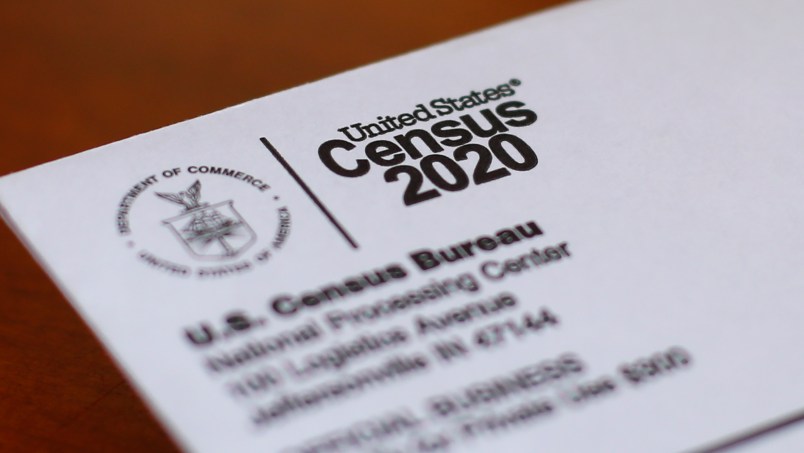In a scathing order overnight, U.S. Federal Judge Lucy Koh ordered that the counting operations for the decennial census continue through Oct. 31. She said that the administration, by trying to end those operations sooner than that, had violated her previous orders extending the count.
“Defendants’ dissemination of erroneous information; lurching from one hasty, unexplained plan to the next; and unlawful sacrifices of completeness and accuracy of the 2020 Census are upending the status quo, violating the Injunction Order, and undermining the credibility of the Census Bureau and the 2020 Census. This must stop,” Koh said in her latest order.
She’s demanded that the Bureau send a text to all of its workers on Friday morning confirming to them the count’s data collection activities will last until the end of the month. She has also requested that Census Director Steve Dillingham — who, she previously noted, has been mysterious absent from the internal documents the administration has filed in the litigation — “file a declaration under penalty of perjury that unequivocally confirms Defendants’ ongoing compliance with ” her order.
Koh’s order is the latest setback the Trump administration has suffered in recent weeks, as it rushes to finish the count while it defends in court Trump’s anti-immigrant apportionment policy. The policy seeks to exclude undocumented immigrants from the set of census numbers used to determine how many House seats each state gets.
Back in April, because of the COVID-19 outbreak, the administration set out a new timeline for the 2020 census that would give the bureau until April 30, 2021 to deliver the census’ apportionment data, which usually is produced at the end of the year. In late July, after Trump announced the apportionment policy, his administration backed away from its decision to give the Census Bureau more time to count — a reversal the Justice Department has claimed was due to the fact that Congress had not yet formally postponed the Dec. 31 apportionment deadline, which is written into law.
Judge Koh’s order suggested she, like many others, was skeptical of that explanation. She said court documents filed in the case had shown that that administration efforts to keep the Census Bureau on a timeline to meet the Dec. 31 deadline — even after she blocked that deadline last month — were “intertwined” with the apportionment policy.
The most recent dust-up arose after the Census Bureau’s bizarre Monday announcement that Commerce Secretary Wilbur Ross, who oversees the census, had set a new “target date” for finishing data collection for the census by Oct. 5.
The announcement raised eyebrows because Judge Koh’s previous order extending the count had been widely interpreted to have reinstated the extended census counting timeline that had been announced in April. That timeline dictated the data collection continue through Oct. 31.
Koh’s latest order makes explicit that that’s what she meant. She said the target date announcement was the most “egregious” example of her previous order being violated, but she pointed to several others. Among them was the bureau’s failure to update its website to reflect her previous order, as well as the lack of mass communication to its workforce about the previous order — which the bureau did employ when Ross announced the new target date.
“Defendants’ clear, fast, and concerted advertising of the October 5 date stands in stark contrast with Defendants’ chaotic, dilatory, and incomplete compliance with the Injunction Order,” she said. She also noted the flood of outreach her court has received — outreach she has posted to the case’s docket — from census workers alleging that they had been pressured to continue rushing the count even after her orders.
Koh called out claims in the case made previously by Al Fontenot, a top Census Bureau career official. The Justice Department has repeatedly filed declarations from Fontenot to explain why the bureau was taking the actions it was.
In one of these declarations, submitted before the judge had issued her previous order extending the count, Fontenot said that extending the data collection beyond Sept. 30 — which is what the administration planned with the truncated plan put together in late July — would make it impossible for the bureau to meet the Dec. 31 apportionment deadline.
Ross’ announcement of the new Oct. 5 target date was a “blatant contradiction” of that assessment, Koh said. Internal documents filed this week showed that Ross came up with the date after he was told by a top Bureau official that it was the last possible date to wrap up counting while still meeting the Dec. 31 apportionment deadline. The official also counseled Ross that letting data collection go beyond Oct. 5 would further “the goal of a complete and accurate 2020 Census.”
Koh noted that the administration’s continued fixation on producing apportionment data by Dec. 31 — even after she blocked that deadline — had left its plans for delivering the counts redistricting data “for another day.”
Usually the redistricting data is released three months after the apportionment data, and the statutory deadline for it reflects as such. But to meet the apportionment data deadline, the administration directed the bureau to take an “unprecedented” approach to processing the redistricting data that would “negatively impact” the redistricting data’s accuracy, Koh said.
“The Court will subject Defendants to sanctions or contempt proceedings if Defendants violate the Injunction Order again,” Koh warned.
Read the order below:



